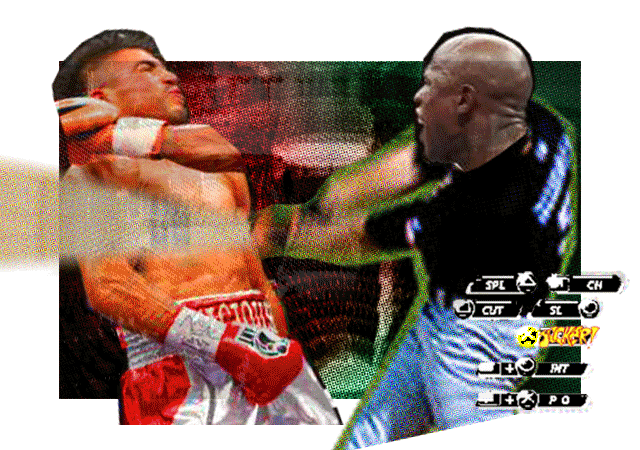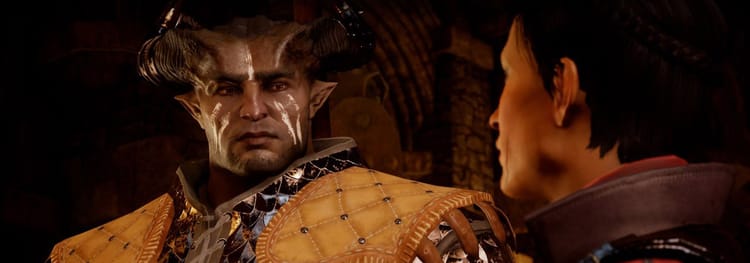In Defense of Cheap Shots

Sept. 18, 2011: Floyd Mayweather, Jr. vs. Victor Ortiz. Mayweather—undefeated and possibly unbeatable—was favored 6.5:1 over the young Victor Ortiz, whose most notable moment up until that point had been refusing to leave his corner after the sixth round of his last marquee fight. Predictably, through the first three rounds, Ortiz was being crushed by Mayweather, who looked mostly bored.
In the fourth, Ortiz did something idiotic.
It was the boxing equivalent of throwing a temper tantrum: he pushed Mayweather into the corner and then leaped forward with a Zidane-esque headbutt. The referee lunged in to separate the two fighters, directing them to their corners while simultaneously trying to score the foul with the ringside judges. In the chaotic seconds that followed, Ortiz tried to hug Mayweather twice—a customary boxing apology, though usually reserved for accidents. The first time, Mayweather wanly accepted; the second, Mayweather feinted a hug and then promptly KO’d Ortiz with a point-blank, left-right combo. The crowd went wild with a mix of anger and surprise.
I wasn’t fan of Mayweather’s boxing before the Ortiz fight, but his cheap-shot knockout did what his 25 other career KO’s couldn’t: It convinced me that Mayweather is a great sportsman (n.b.: he is still an awful human being).
Boxing isn’t fighting; like all other sports, it is a game about fighting—a pretty crass metaphor, compared to curling, but a metaphor all the same for real-life rivalry. And like every game about fighting, boxing is defined by the specific rules that govern its metaphor. The rule sets of sports do not supplement the codes of conduct in real life, but replace them. Mayweather’s knockout was the result of the momentary betrayal of the two overriding rules of the metaphor of boxing: punch (and only punch) when time is in; and protect yourself at all times. Ortiz’s headbutt, his pleas for a truce—and his assumption Mayweather’s open arms were a gesture of good faith—all make sense in the context of a real fight, not so much in a game about fighting.
For a few seconds in the fourth round, Ortiz started acting like a normal human being, not someone engaged in a dance around rules. And that’s why he got cold-clocked. Some would call Mayweather’s strategy “unsportsmanlike,” but wasn’t his sucker-punch actually the ultimate sportsmanlike move? His instantaneous appraisal of Ortiz’s mistake was nothing but a virtuosic navigation of the rules of the sport. Ortiz, meanwhile, had abandoned the rules of the game.
If you play a simulation “realistically,” every little clipped texture, every moronic AI move, threatens to ruin the source of your enjoyment. Those mistakes should be the reason you enjoy the game to begin with.
So here’s my confession: I’m the Floyd Mayweather, Jr. of online baseball. I play a lot of SCEA’s baseball simulation MLB: The Show—a lot—and I’m the cheapest, most exasperating opponent you’ll ever meet. What I mean is that when I play The Show, I don’t play by the rules of baseball any more than Mayweather abides by polite conventions when he boxes. Just as a sport is a game version of some other Real Thing, a sports simulation is doubly a game: we aren’t playing the real sport, but a videogame about the sport. The rules of the videogame are not the rules of the sport.
In one of The Show’s “realistic” features, for example, a batter will argue a close play at first base and occasionally get ejected; and the human player can’t actually control when these arguments happen or what the outcome is. Close play, and 10 percent of the time your guy will get tossed. So when I play online I purposely make every play at first as close as possible—I run around in circles and dive aimlessly to kill enough time to make it to the bag just in time, and voilà—I can get all your top players ejected by the 6th inning.
I’ve also realized that if you pinch-hit for your pitcher, The Show automatically leaves your pinch hitter as the pitcher when your team takes up the field. A real team would never ask a pinch-hitter—who may not even know how to throw, let alone pitch—to take the mound. In The Show, you get a pitcher whose wind-up and release point are jerky and distracting and whose pitches are impossibly slow. Real-life hitters would have no problem adjusting, but it’s not so easy in The Show, with its batting interface that has been finely tailored to make normal pitchers look “realistic,” and is unable to account for such extreme variables. You become unhittable until your opponent manages to adjust—and then, of course, you put in your fastest pitcher, forcing them to do it all over again.
Obviously, most of the people I play online hate me. The Show is renowned for its baseball realism, and so it has created a community of die-hard simulation fans. The two largest online forums for the game—one hosted by SCEA, the other by Operation Sports—brim with complaints about everything, from people who throw an unrealistic number of curveballs, to inconsistencies in the depiction of the miniature stadium in the kids’ park behind the left field wall of the virtual version of AT&T Park in San Francisco. I just think they have their priorities confused. For those scrupulous diehards I no-hit with my third baseman, who argue endlessly about the need for things like 3D grass and anatomically correct ball girls, “realism” lies in the superficial details. They suspend their disbelief in all sorts of formal inconsistencies—the awkwardness of controlling nine people at once with a few buttons, load screens, jagged anti-aliasing—so that they can pretend The Show could be the real thing.
When I play The Show, I don’t play by the rules of baseball any more than Mayweather abides by polite conventions when he boxes.
The forebears of these reality slaves were the art audiences of the Renaissance, viewers for whom the illusionistic reproduction of reality was the ultimate goal. For centuries everyone agreed to conveniently forget that paintings were obviously just collections of pigment on canvas hung on a wall, and pretended they were magical windows onto reality (perspective literally means seeing-through). They ignored certain inconvenient formal conditions in favor of the details of content. Whether you are pretending to hit a grand slam in the bottom of the ninth, or witnessing the birth of your savior, the appeal of the illusion is the same: it’s easier to imagine yourself inside the representation.
By contrast, my style follows the Modernists—Cezanne, Pollock, Stella, etc.—who dropped all the magical thinking to play with some ineluctable formal truths about their medium. For them it was the flatness of the canvas and the limitations of binocular vision; for me it’s the glitches. The sim fans may be annoyed to play against someone like me, but the alternative is positively exasperating: If you play a simulation “realistically,” every little clipped texture, every moronic AI move, threatens to ruin the source of your enjoyment. Those mistakes should be the reason you enjoy the game to begin with. If you care about polygon count, you aren’t going to be pleased when a vintage simulation like NHL ’96 lets you play a team against itself, and see who would win if Dino Cicarelli fought himself.
Sports videogames, rife with glitches, provide never-ending room for creative play. They can do something a perfect simulation can’t: bring you closer to the uncanny moment of improvisation between human and system, the gleeful leap into the gap between a game and its model—the real thing of videogaming. Sticking to real life over the rules of the game isn’t how to be realistic; it’s how to get set up for a sucker punch.
Illustration by Daniel Purvis



